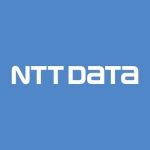With the recent release of Social Cloud, I asked the RedBit teamwhat are the top reasons for using Windows Azure Mobile Services and here is what we have.
Easy Third Party Authentication
Using the Identity feature of Azure Mobile Services allows developers to quick implement OAuth based authentication without having to worry about a lot of the plumbing code that is required when writing everything from scratch.
You can easily incorporate authentication with
- Microsoft Account
- Facebook
- Twitter
- Google
As a developer all you would have to do is
- Specify the keys in the portal
- Use the mobile SDK for iOS, Android, Windows 8, Windows Phone with application
- Authenticate via the SDK calling MobileServiceClient.LoginAsync()
Here is what it would look like from the dashboard to setup keys
To learn more about this feature see Get Started With Authentication with Mobile Services
Data Storage
Most mobile apps written today need some form of data storage and usually the process is
- Figure out where to host it
- Figure out what type of database to use
- Write some REST APIs to access the data
- Make sure the APIs are secured
Using the data feature of Azure Mobile Services developers can quickly create data tables, secure the data tables for read/write operations and also write custom scripts to run when an insert, update, delete or read operation is performed on the data.
From the client side, using the SDK, you call the MobileServiceClient.GetTable<>() method and data will be retrieved. If the data is secured via the portal settings, you will need to login using the client SDK before attempting to retrieve the data.
For more information see Get Started with Data in Mobile Services.
Client Libraries
Azure Mobile Services comes with clients libraries for the main mobile platforms available in the market today which are
- iOS
- Android
- Windows Phone 8
- Windows 8 (C# & JavaScript)
- Xamarin for iOS & Android
Leveraging this library and Azure Mobile Services on the back end, developers can focus on writing their app and not all the extra plumbing required for things such as authentication.
Custom APIs
The API feature is relatively new (as of Jun 24 2013) to Azure Mobile Services but allows developers to quick build APIs to the systems to be accessed by various client applications. You can quickly build out the APIs required by your app and just as quickly secure the APIs making sure only authenticated users have access to the APIs. Definitely something to use more often in the future!
Push Notifications
I’m a big fan of push notifications for mobile apps because it allows users to stay connected and engaged with their users. It’s also a great way to entice users to open your apps and this is especially useful if you are monetizing your apps with in app advertising.
Using Azure mobile Services, developers can quickly get this up and running on the various platforms such as iOS, Android, Windows Phone 8 and Windows 8 and it’s as easy as setting a few keys in your Azure Mobile Services Dashboard

Definitely something every developer should look at to keep their users engaged with their app.
For more information on how to get this running, see Get Started with Push Notifications in Mobile Services.
Overall, I think Windows Azure Mobile services really helps accelerate the development cycle and get your product to market faster. It allows you to focus on building out your product on not have to worry about server infrastructure or plumbing code required for things like authentication. When you need to scale, it’s just a few clicks and you are ready to handle your extra load from your users.
So those are our top reasons for using Windows Azure Mobile Services. If you have used it, what are your top reasons? Ping me or the RedBit team on Twitter or leave a comment here.
https://www.redbitdev.com/top-reasons-developers-should-use-windows-azure-mobile-services/Disclosure: I am a real user, and this review is based on my own experience and opinions.

















